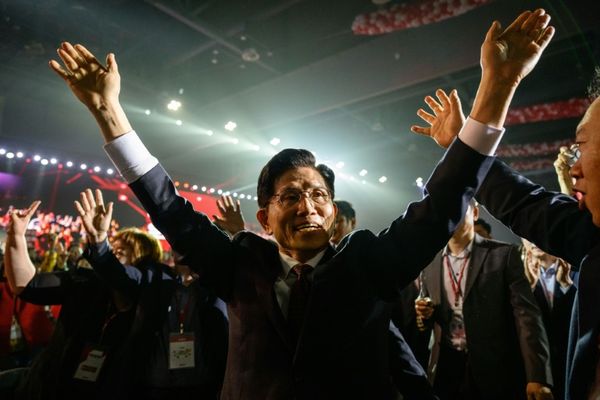
The Democratic Party is in the midst of an important debate about the future of America’s political economy. Even as mainstream progressives campaign for further increasing public subsidies for medical care, housing, and higher education, a rising chorus of “supply-side progressives” is urging the left to focus instead on using the power of government to loosen the bottlenecks that make these goods so expensive and inaccessible in the first place. In a number of domains, supply-side progressives embrace prescriptions drawn from market liberalism, most notably in their calls for reforming stringent land-use restrictions that drive up the underlying cost of housing and liberalizing skilled immigration. But what separates supply-side progressives from supply-side conservatives is their enthusiasm for activist government. The movement is united by a belief in the need for a more venturesome and efficient administrative state, one capable of driving down the cost of building complex infrastructure projects and making visionary investments in clean energy, among many other things.
As much as I might disagree with the supply-side progressives on the limits of government power, their openness to market-oriented policies and willingness to at least acknowledge the mismanagement and sclerosis plaguing much of the public sector makes for a favorable contrast with their opponents in the progressive mainstream. Yet supply-side progressivism suffers from a serious weakness, particularly when compared with the mainstream progressivism it is hoping to dislodge as the Democratic Party’s unifying ideological thread. Judging by the visibility and prestige of its intellectual champions, the movement has gone from strength to strength, having captured the imagination of a number of key philanthropists, academic social scientists, opinion journalists, and, perhaps most important, Biden-administration officials. But it’s not clear that supply-side progressivism, as a political project, has a way forward.
Consider Ezra Klein’s recent critique of “everything-bagel liberalism” in The New York Times, which perfectly captures mainstream progressivism’s fundamental flaw. Drawing on the case of Tahanan, a supportive-housing complex in San Francisco, he laments the accretion of local and state regulations that inflates the cost of public projects in communities throughout the country, and that therefore greatly limits the horizons of progressive governance. Klein, one of the most prominent supply-side progressives, details the various regulatory hurdles facing Tahanan, and offers a larger argument about why so many ambitious progressive initiatives run aground. “Government needs to be able to solve big problems,” Klein writes. “But the inability or the unwillingness to choose among competing priorities—to pile too much on the bagel—is itself a choice.” He sees that same failure to choose in many other domains as well, including the Biden administration’s push to revitalize the U.S. semiconductor industry.
The problem with mainstream progressivism, Klein argues, is that it is “much better at seeing where the government could spend more than at determining how it could make that spending go farther and faster,” and this lack of focus risks discrediting progressive governance. This is, of course, a line of argument that will resonate with conservative partisans of limited government, who object to the unlimited welfarism that has come to define mainstream progressivism. But it is also a challenge to supply-side progressives who want to change the Democratic Party’s policy direction. If mainstream progressivism’s failure to make hard choices is doing so much damage, why has it been so politically durable—and why is supply-side progressivism, for all its virtues, proving such an uphill climb?
Rather than evaluate mainstream progressivism as a policy program designed to achieve some well-defined ideological objective, it is instructive to see it more as a political formula, a set of commitments aimed at binding together a diverse Democratic coalition. By that standard, mainstream progressivism has proved incredibly potent. The Democratic Party represents tens of millions of American voters, but voters organized into cohesive interest groups are more powerful than those who happen to show up at the ballot box every now and again. Within the coalition, interest groups wield disproportionate influence, and all the more if they’re capable of bringing significant financial and organizational resources to bear. When elected Democrats strike legislative bargains, they’re keenly aware of the need to incorporate the priorities of these groups, even if that means undermining the efficiency or coherence of their policy initiatives. Contra Klein, the problem is not that progressives aren’t being sufficiently disciplined in their approach to policy design. It’s that the political imperative of holding together the coalition will always win out over high-minded idealism.
Everything-bagel liberalism reflects the priorities and nonnegotiable demands of the Democratic Party’s most efficacious constituencies: unionized public employees and affluent metropolitan liberals, groups that to some extent overlap. Though members of both of these groups might have idealistic reasons to embrace supply-side progressivism, their material self-interest is well served by the progressive mainstream.
First, let’s look to the core interests of public-sector labor. Supply-side progressivism envisions a more effective, efficient, and accountable government. At a minimum, achieving that goal will require extracting concessions from public-employee unions, if not limiting collective-bargaining rights in the public sector altogether, as many supply-side progressives will privately concede. But if elected Democrats even inch in this direction, they can expect intense backlash.
As Klein suggests in his essay, regulations that inflate costs, such as buy-American provisions and prevailing-wage requirements, often do so to create employment opportunities and raise wages above the market-clearing rate. Measures designed to lower costs in public projects—to ensure that taxpayer dollars purchase more and higher-quality public goods and services—often involve making the terms of public or subsidized employment less generous, for example by lowering the overall level of compensation, or demanding increased work effort, or substituting capital for labor outright. From the perspective of a union that relies on membership dues, doing more with less labor is profoundly unattractive. This is particularly true for public-employee unions, as their members are unlikely to be anxious about driving their employer out of business by pressing their demands too aggressively. Like all unions, public-employee unions are obliged to defend the interests of their members, regardless of their productivity, and they do so in part by devoting significant financial resources to electing Democratic candidates. Campaign contributions aside, unionized public employees play a crucial role in voter-contact efforts and as influential advocates for union interests in their families and communities. Any policy initiative that risks sapping the enthusiasm of this constituency would be profoundly damaging to the Democratic Party’s political prospects.
Second, consider the implications of the Democratic Party’s growing reliance on affluent residents of large metropolitan areas, both as voters and as small-dollar donors. According to the political scientist Sam Zacher, a necessary precondition of Democratic gains among affluent voters is that President Joe Biden and other Democratic leaders have embraced a less redistributive economic agenda, grounded more in support for “relatively economically costless forms of extensions of civil rights to more subgroups of Americans” than in deeply held egalitarian convictions. And though there is some evidence to suggest that affluent Democrats support economic redistribution in the abstract, Zacher points to surveys that find that these voters are far less supportive of concrete progressive-taxation policies that affect them directly. One predictable result of the Democratic Party’s rising dependence on the affluent is that elected Democrats are growing reluctant to raise taxes on upper-middle- and high-income voters, as evidenced by President Biden’s commitment to shielding households earning as much as $400,000 from tax increases.
What does the rise of these ActBlue Democrats mean for supply-side progressivism? At first glance, the emergence of a more tax-averse Democratic Party might not seem detrimental to that movement’s prospects. It could be an impetus for an increased emphasis on public-sector efficiency. More difficult to overcome is the fact that affluent Democrats tend to support exclusionary zoning policies in their neighborhoods, a stance that puts them directly at odds with supply-side progressives for whom YIMBYism is a core commitment. Assuming that supply-side progressives don’t intend to reinvent themselves as anti-tax NIMBYs dedicated to breaking the power of organized labor, they’re likely to encounter resistance from affluent Democratic voters.
And so the political prospects for supply-side progressivism aren’t especially bright. The Democratic Party has made a deal—for votes, for manpower, and for money—with public-sector labor and affluent metropolitan liberals. While leading Democrats may celebrate the merits of supply-side progressivism in the abstract, they will generally choose protecting the material interests of their most powerful allies over effective policy design. This dynamic isn’t an accident. It’s a necessary consequence not just of who the Democrats’ supporters are, but the party’s need to hold together a fissiparous majority coalition.
To change the Democratic Party’s political trajectory, supply-side progressives will have to make its core interest groups a better offer, and how they’d do that without vitiating the substance of their policy vision is not obvious. Or they can mobilize new constituencies capable of changing the balance of power within the Democratic coalition, which is easier said than done. Until the supply-side progressives find new friends, and figure out how to say no to their old ones, they will remain thought leaders without thought followers.







